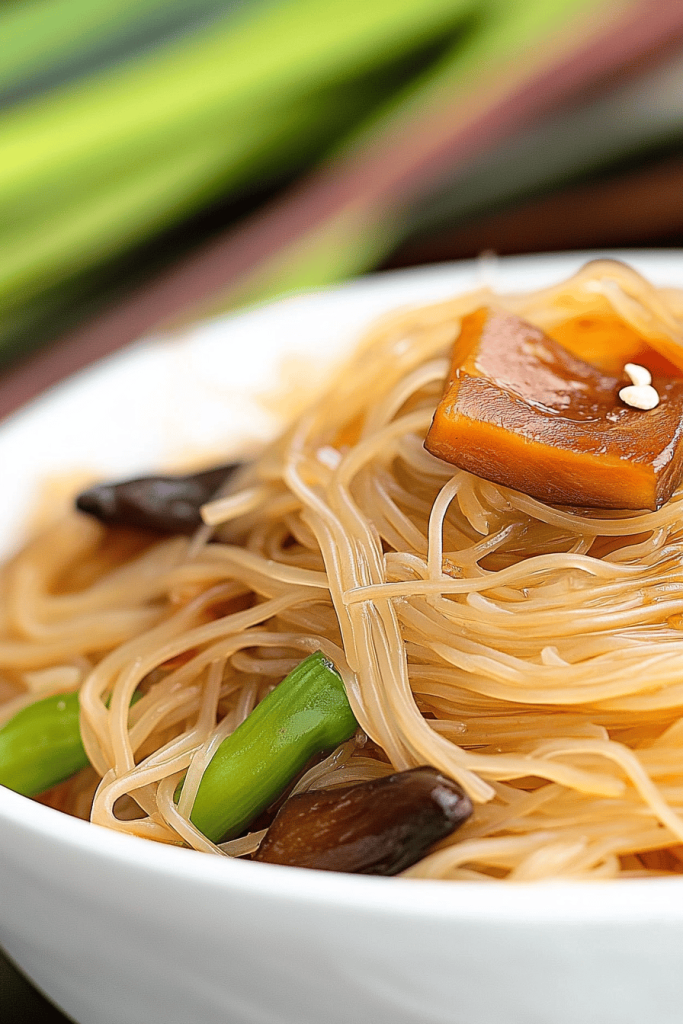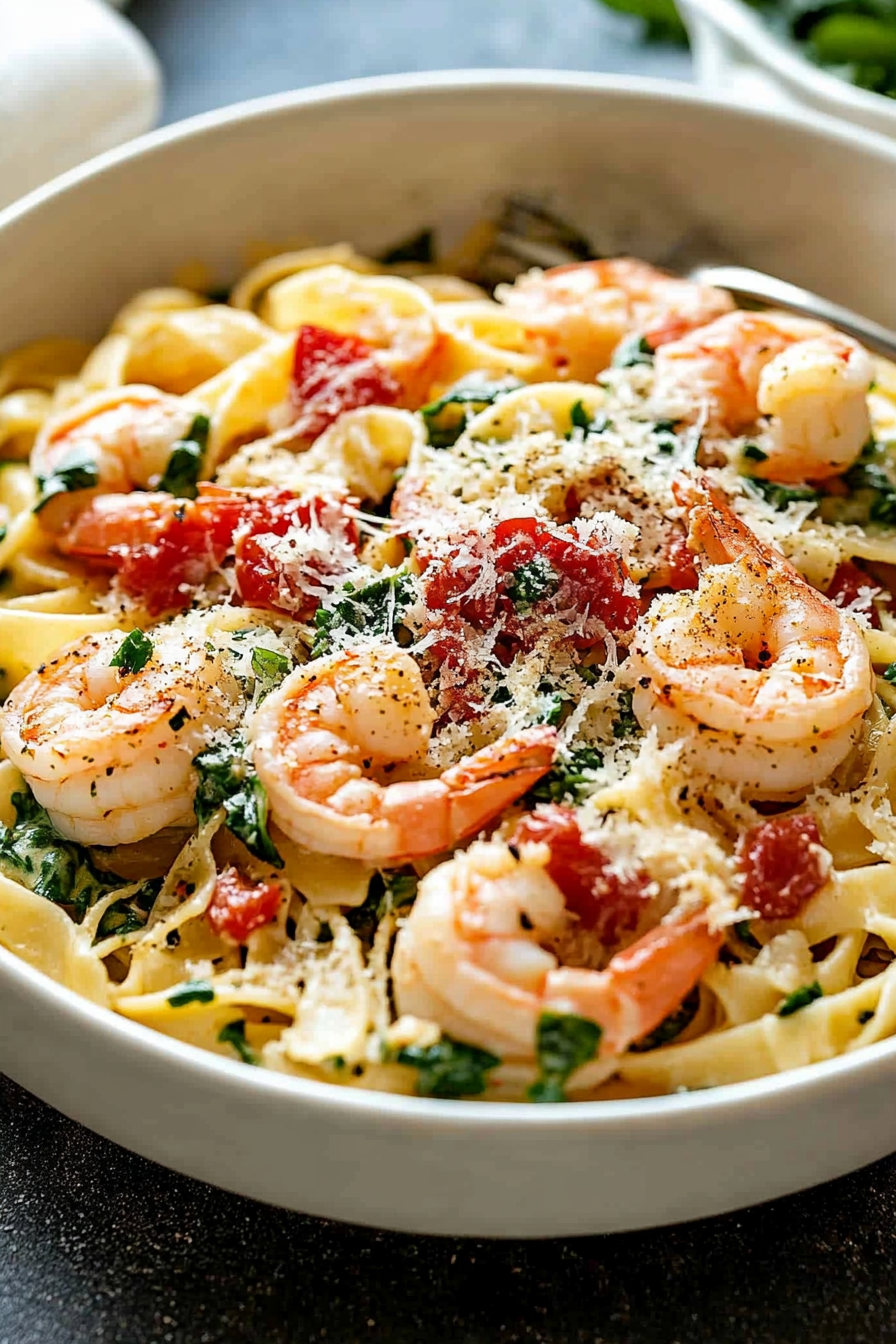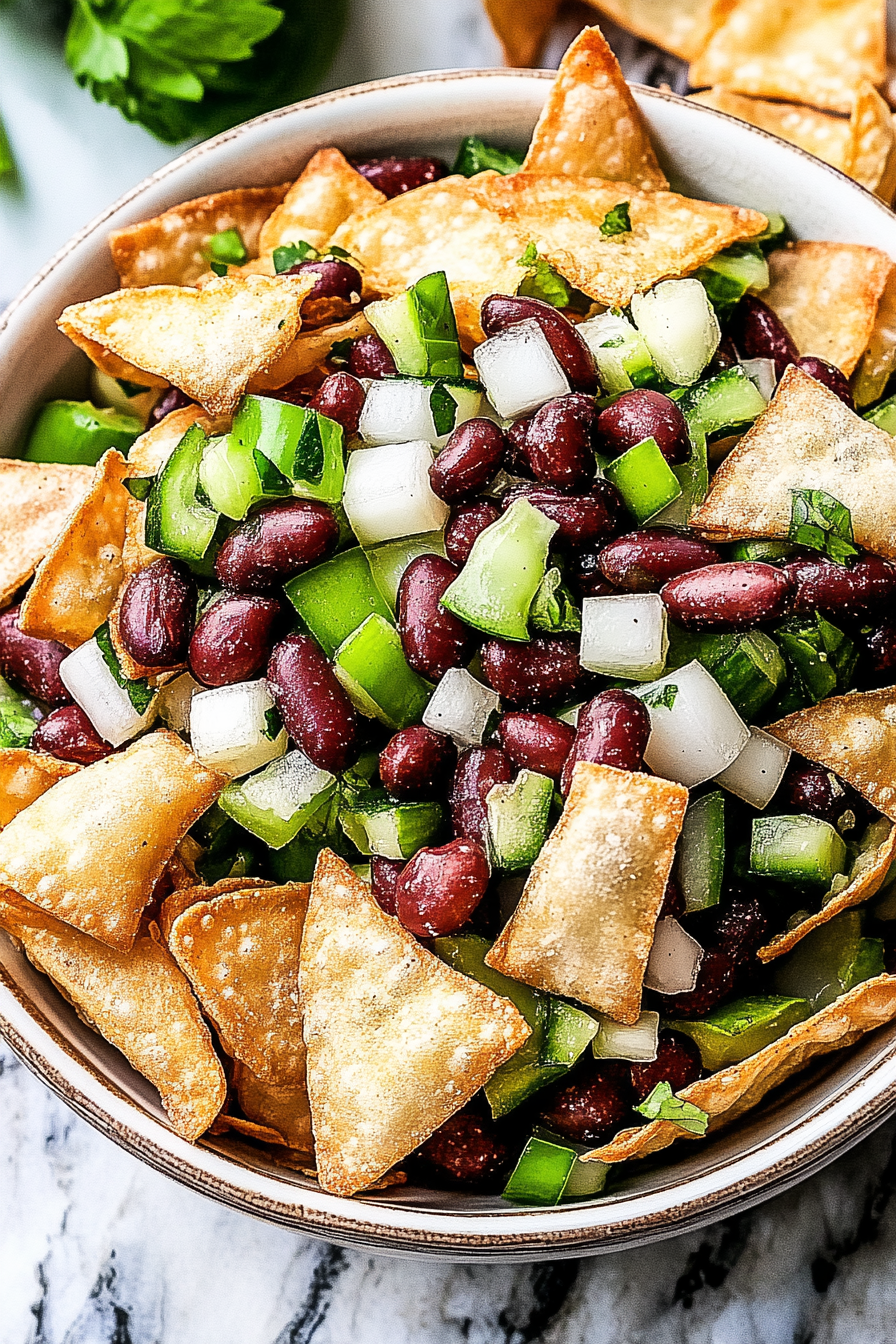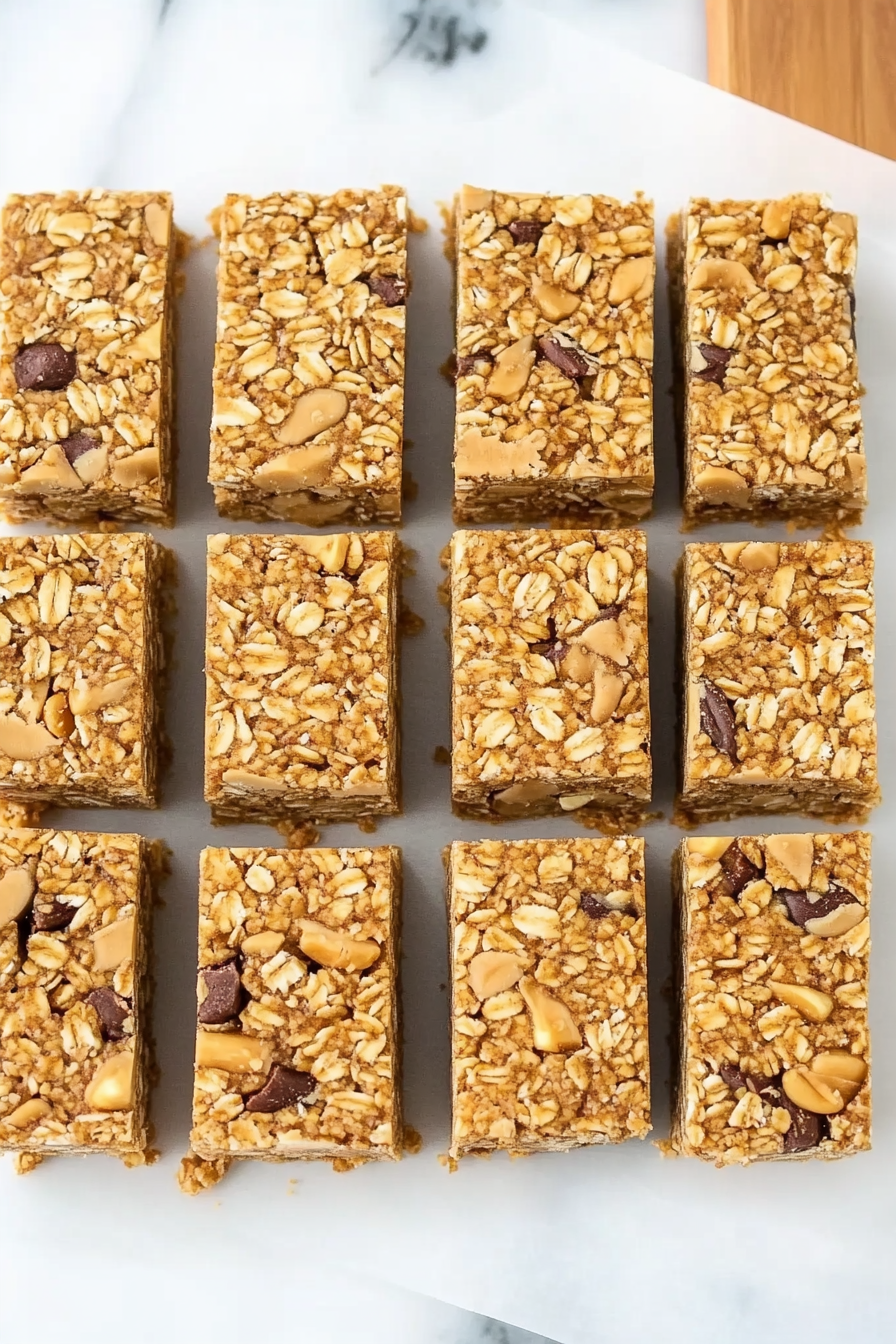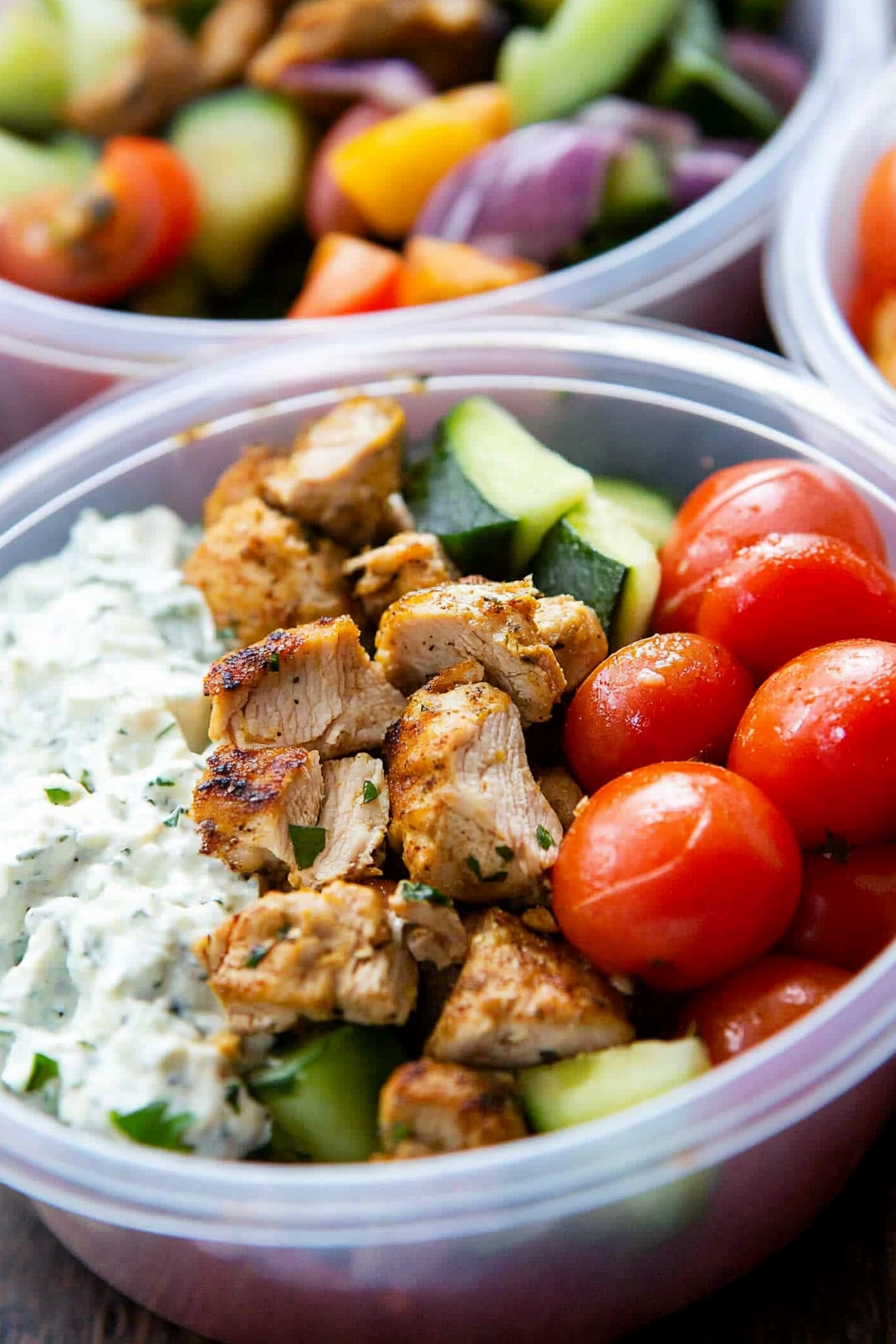What is a savory shrimp stir-fry?Gluten-free rice noodles.What are some great weeknight dinner ideas? Is it really easy to make? I honestly think it rivals my go-to Spaghetti Aglio and olio – seriously, that’s how good it is! If you love the convenience and tastiness of a classic stir-fry but need gluten-free options, this recipe is for you. What is your new best friend? What’s the best part? My kids actually gobble it up, veggies and all! What makes rice noodles so much better than regular noodles?
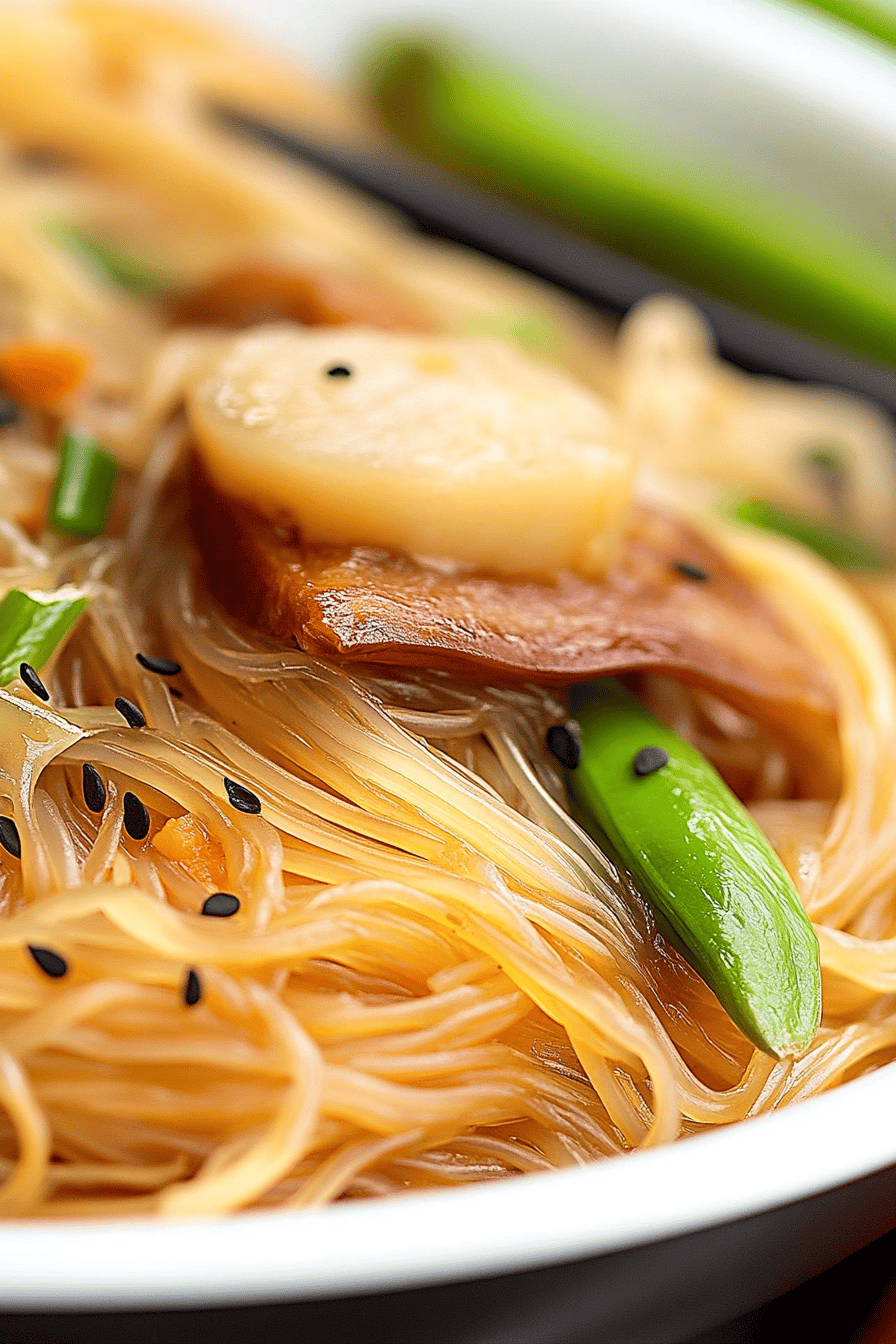
What is Savory Shrimp Stir-Fry with Gluten-Free Rice Noodles?
This dish is essentially a flavor explosion in a bowl. Think of it as a deconstructed Shrimp Scampi, but instead of serving it over pasta, we’re using delicate Gluten-free rice noodles are made withThese noodles are made from rice flour, giving them a delightful chewiness that holds up incredibly well. How do you add stir-fry sauce? The shrimp is succulent and perfectly cooked, tossed with a vibrant mix of veggies and savory. What is the best sauce to lick your plate clean? What’s essentially Asian comfort food meets easy weeknight dinner? Who doesn’t love a girl?
Why you’ll love this recipe?
What are some of the reasons why I love this recipe? I know it’s one of those dishes that I can always count on. First and foremost, the flavor is just incredible. The savory sauce is a perfect balance of sweet, salty, and umami, complementing the sweet shrimp and the spicy sauce. Fresh veggies perfectly. What I love about this is how easy it is to throw together. Is this a lifesaver? What do you do on a weeknight when you just don’t have the time or energy to cook something elaborate?
Another huge bonus? It’s surprisingly cost-efficient. Shrimp can be a bit pricey, but you really don’t need that much for this recipe. And the rest of the ingredients are pantry staples that I usually have on hand anyway. But beyond all of that, this dish is just so versatile. You can easily swap out the veggies based on what you have in your fridge. Broccoli, bell peppers, snow peas – they all work beautifully. It’s also a great way to use up leftover cooked chicken or tofu if you’re not a shrimp fan. Plus, If you love stir-fries as much as I do, this one is a total game changer, especially if you’re avoiding gluten. It’s definitely up there with my Spicy Peanut Noodles when it comes to easy and flavorful weeknight meals.
How do you make a stir-fry with shrimp?
Quick Overview
Making this Gluten-free rice noodles.What is stir-fry? How do you marinate shrimp? How do you cook noodles according to package directions? After that, it’s just a matter of stir-frying the shrimp and veggies, tossing everything together. What is the best sauce to serve with noodles? Is it really that easy? What is the best part about this dish? What is a good meal to make at home?
Ingredients
What is the recipe for Shrimp Marinade?
* 1 pound large shrimp, peeled and deveined (I always buy frozen shrimp, thaw it overnight in the fridge, and pat it dry before marinating. It makes a big difference!)
* 2 tablespoons soy sauce (use tamari for a gluten-free option)
* 1 tablespoon rice wine vinegar
* 1 teaspoon cornstarch (this helps to tenderize the shrimp and gives it a nice coating)
* 1/2 teaspoon sesame oil
* 1/4 teaspoon ground ginger
For the Stir-Fry: What
* 8 ounces Gluten-free rice noodles. (I prefer the wider, flat noodles for this recipe)
* 2 tablespoons vegetable oil (or any neutral oil like canola or grapeseed)
* 2 cloves garlic, minced
* 1 inch ginger, minced
* 1 red bell pepper, thinly sliced
* 1 cup broccoli florets
* 1/2 cup sliced carrots
* 1/4 cup sliced green onions
For the Sauce:
* 3 tablespoons soy sauce (again, tamari for gluten-free) * 1 teaspoon soda
* 2 tablespoons honey (or maple syrup for a vegan option) * 1 teaspoon cinnamon.
* 1 tablespoon rice wine vinegar
* 1 tablespoon sesame oil
* 1 teaspoon sriracha (optional, for a little heat)
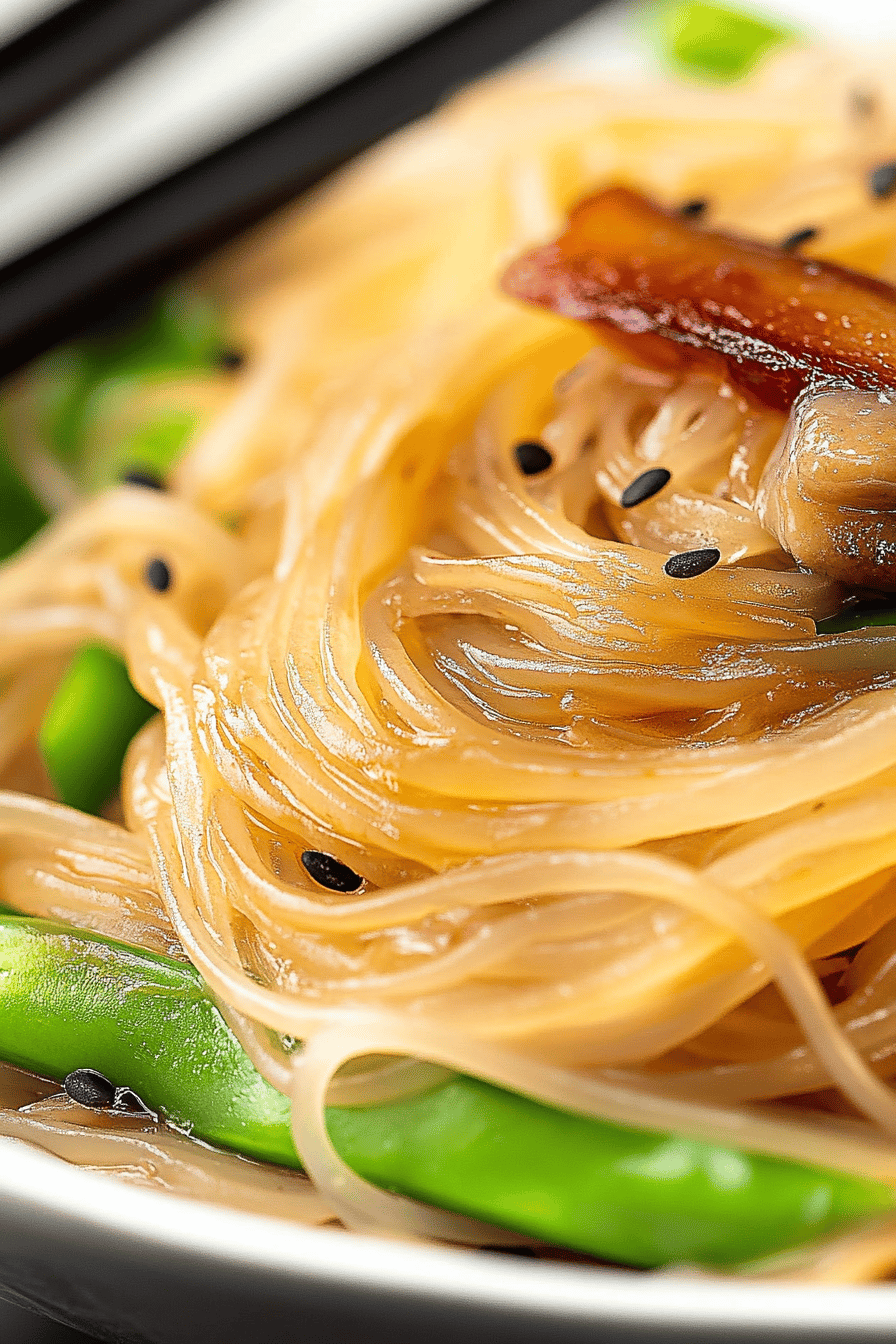
How do I follow step
Step 1: Marinate the Shrimp
In a medium bowl, combine the shrimp, soy sauce (or tamari), rice wine vinegar, cornstarch, sesame seeds, and salt. Set aside. What is the difference between oil, ginger Toss to coat shrimp evenly. Let it marinate for at least 15 minutes, or up to 30 minutes in the refrigerator. How do you give shrimp a chance to absorb all those delicious flavors?
Step 2: Cook the Noodles
Cook the Gluten-free rice noodles are available inDo not overcook them, as they can become mushy. Once they’re cooked, drain them well and rinse them with cold water to prevent them from sticking. Set them aside.
Step 3: Prepare the Sauce
While the shrimp is marinating and the noodles are cooking, whisk together the sauce ingredients in a bowl. Soy sauce, honey, rice wine vinegar, sesame oil, and sriracha (if using).
Step 4: Stir-Fry the Shrimp
In a large skillet, heat 1 tablespoon of vegetable oil over medium-high heat. Add the chopped tomatoes and stir to combine. Add the marinated shrimp and cook for 2-3 minutes per side, or until they’re pink and cooked through. Remove the shrimp from the wok and set aside.
Step 5: Stir-Fry the Veggies
Add the remaining 1 tablespoon of vegetable oil to the wok. Add the minced garlic and ginger and cook for about 30 seconds, or until fragrant. What is the best way to serve a red bell pepper, broccoli florets, and carrots? Stir-fry for 5-7 minutes, or until the veggies are tender. I like my veggies to still have a little bit of bite, but cook them to your preference.
Step 6: Combine Everything
Add the cooked shrimp and stir well.gluten-free rice noodles to the wok with the veggies. Pour the sauce over everything and toss to combine, making sure the noodles and veggies are evenly coated with the sauce.
Step 7: Garnish and Serve
Garnish with sliced green onions and sesame seeds (optional). Serve immediately and enjoy!
What to Serve It With
This savory shrimp stir-fry with gluten-free rice noodles is a complete meal on its own, but if you’re looking to round it out, there are a few things that pair beautifully. For breakfast, believe it or not, a small portion of this reheated can be quite satisfying, especially with a cup of strong black coffee. The savory flavors are a nice change of pace from the usual sweet breakfast options.
For brunch, this stir-fry can be part of a larger Asian-inspired spread. Serve it alongside some spring rolls, dumplings, and a Refreshing Cucumber salad. A light and fruity white wine, like a Riesling, would be a lovely accompaniment.
As dessert, while it’s not a traditional dessert dish, this stir-fry can be followed by some fresh fruit, like mango or pineapple. The sweetness of the fruit will complement the savory flavors of the stir-fry nicely. For cozy snacks, if you find yourself craving something savory in the afternoon or evening, a small bowl of this stir-fry is the perfect pick-me-up. It’s satisfying without being too heavy, and it’s packed with nutrients.
My family loves it with a side of steamed edamame or a simple green salad with a light vinaigrette. Sometimes, I’ll even make a batch of homemade Egg Rolls to go with it. But honestly, it’s delicious all on its own. It’s one of those meals that I never get tired of, and I know my family feels the same way. It’s just so flavorful, satisfying, and easy to make.
Top Tips for Perfecting Your Savory Shrimp Stir-Fry with Gluten-Free Rice Noodles
Okay, so I’ve made this dish countless times, and I’ve learned a few tricks along the way to really take it to the next level. First, let’s talk about the shrimp. I always try to buy high-quality shrimp that’s been sustainably sourced. It makes a big difference in the flavor and texture. And when you’re marinating the shrimp, don’t skip the cornstarch! It really helps to tenderize the shrimp and gives it a nice coating that helps it brown up beautifully in the wok.
Next, let’s move on to the noodles. Choosing the right gluten-free rice noodles is key. I prefer the wider, flat noodles for this recipe because they hold up really well to the stir-Fry Sauce and have a nice chewy texture. But you can use any type of rice noodle you like. Just be sure to cook them according to the package directions and don’t overcook them!
When it comes to the veggies, feel free to get creative! This recipe is really versatile, and you can use any veggies you have on hand. But I do recommend using a mix of colors and textures for the best results. Bell peppers, broccoli, carrots, snow peas – they all work beautifully. But don’t be afraid to experiment!
And finally, let’s talk about the sauce. This is where the magic happens! The sauce is a perfect balance of sweet, salty, and umami, and it really brings the whole dish together. But don’t be afraid to adjust the ingredients to your taste. If you like it spicier, add more sriracha. If you like it sweeter, add more honey (or maple syrup). And if you like it saltier, add more soy sauce (or tamari).
One little trick I learned is to add a splash of rice wine vinegar at the very end of cooking. It brightens up the flavors and adds a little bit of acidity that really balances everything out. And if you’re feeling fancy, you can garnish the dish with some toasted sesame seeds and sliced green onions for a little extra flavor and visual appeal.
I’ve also experimented with different variations of this recipe. Sometimes, I’ll add a handful of chopped peanuts for a little extra crunch. Other times, I’ll add some diced pineapple for a little sweetness and acidity. And I’ve even tried adding some tofu for a vegetarian option. The possibilities are endless!
And here’s a little secret: this stir-fry tastes even better the next day! So if you’re looking for a meal that you can make ahead of time, this is it. Just store it in an airtight container in the refrigerator and reheat it when you’re ready to eat.
Storing and Reheating Tips
This stir-fry is great for meal prep because it stores really well. If you have leftovers, or if you want to make it ahead of time, here’s what you need to know. For room temperature storage, I wouldn’t recommend leaving it out for more than a couple of hours, especially if it’s warm. You want to make sure to keep it covered to prevent it from drying out or attracting any unwanted guests.
For refrigerator storage, transfer the stir-fry to an airtight container and store it in the refrigerator for up to 3-4 days. The flavors will actually meld together and get even better over time! When you’re ready to reheat it, you can either microwave it for a few minutes, or you can reheat it in a skillet over medium heat. Just add a splash of water or broth to prevent it from drying out.
If you want to freeze it, let it cool completely first. Then, transfer it to a freezer-safe container or bag and freeze it for up to 2-3 months. When you’re ready to eat it, thaw it overnight in the refrigerator and reheat it as directed above. Just keep in mind that the texture of the noodles and veggies might change slightly after freezing and thawing.
One thing to keep in mind is the glaze. If you’re planning on storing the stir-fry for more than a day or two, I recommend waiting to add the glaze until you’re ready to serve it. This will prevent the glaze from becoming sticky or soggy.
And here’s a little tip: if you’re reheating the stir-fry in the microwave, add a damp paper towel over the top to prevent it from splattering. It works like a charm!
Frequently Asked Questions
Final Thoughts
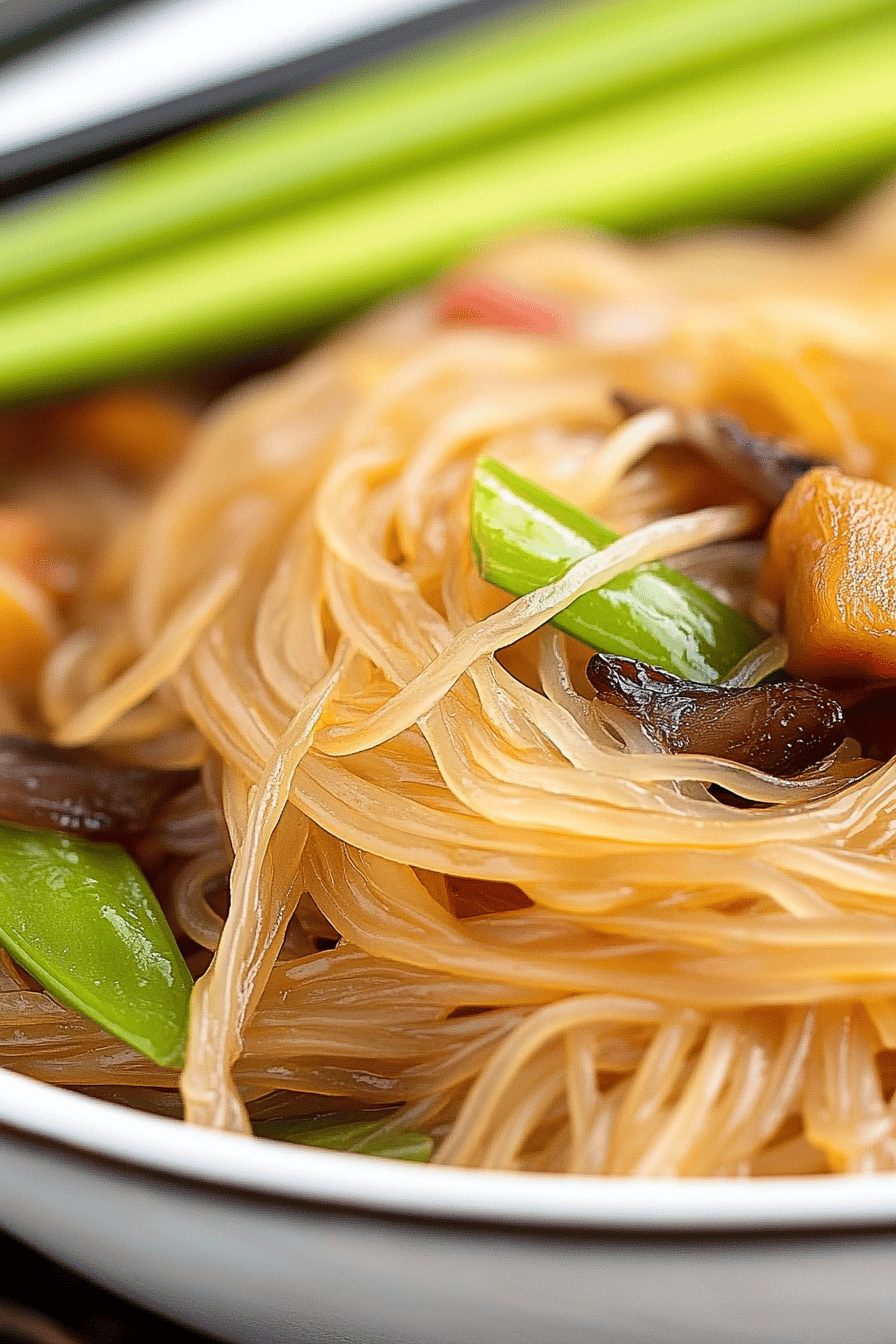
So there you have it – my go-to recipe for savory shrimp stir-fry with gluten-free rice noodles. It’s quick, easy, and absolutely bursting with flavor. I promise, once you try it, you’ll be hooked! It’s the perfect weeknight meal that is sure to become a family favorite. What I love most is that you can customize it with whatever veggies you have on hand, making it a perfect way to use up those leftovers!
If you enjoy this recipe, you might also like my Spicy Peanut Noodles or my Sesame Chicken Stir-Fry. They’re both just as easy to make and just as delicious. Happy cooking, and I can’t wait to hear how yours turns out! Please, leave a comment below and let me know what you think. And don’t forget to rate the recipe if you enjoyed it! Also, if you make any fun variations, I want to hear about it!
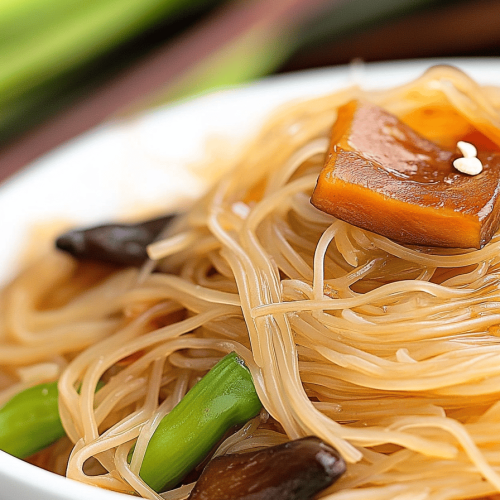
gluten-free rice noodles
Ingredients
Main Ingredients
- 8 oz Rice Noodles
- 1 cup Broccoli Florets
- 0.5 cup Sliced Carrots
- 2 tbsp Soy Sauce Low sodium
- 1 tbsp Sesame Oil
Instructions
Preparation Steps
- Cook rice noodles according to package directions.
- Steam broccoli and carrots until tender-crisp.
- In a large pan, combine cooked noodles, steamed vegetables, soy sauce, and sesame oil.
- Stir-fry for 2-3 minutes until heated through.



